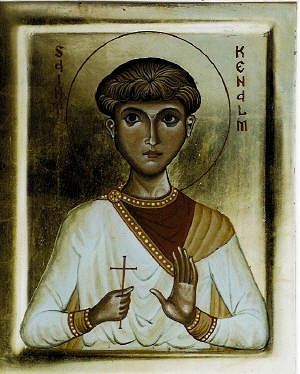 Icon of St. Kenelm Unfortunately, the early, original life of St. Kenelm, one of the most venerated saints of western England, has not survived, but there are many late medieval traditions associated with the saint. All of them reflect the English people’s deep love for this holy prince and martyr, from whose relics numerous miracles have occurred over the centuries. According to the evidence of the historian William of Malmesbury, who lived in the twelfth century, at that time the shrine of St. Kenelm in the town of Winchcombe in Gloucestershire attracted more pilgrims from England and abroad than did any other shrine in the country.
Icon of St. Kenelm Unfortunately, the early, original life of St. Kenelm, one of the most venerated saints of western England, has not survived, but there are many late medieval traditions associated with the saint. All of them reflect the English people’s deep love for this holy prince and martyr, from whose relics numerous miracles have occurred over the centuries. According to the evidence of the historian William of Malmesbury, who lived in the twelfth century, at that time the shrine of St. Kenelm in the town of Winchcombe in Gloucestershire attracted more pilgrims from England and abroad than did any other shrine in the country.
According to earlier evidence, Kenelm (Cynehelm), prince of the ancient and powerful English kingdom of Mercia, was probably born in 786, a son of the pious King Coenwulf of Mercia, who ruled from 796 to 821. Among Coenwulf’s good deeds was the foundation in 789 of a monastery in Winchcombe, the capital of Mercia. According to two of the most reliable versions, the young prince was either murdered in 811 at the hands of traitors of the royal household of Mercia, who strived to take power unlawfully, or fell in a battle with the pagans in the Marches (the border area between England and Wales). The name of prince Kenelm can be found in a number of surviving official documents, charters and letters of that period. But his name disappears from all documents after 811, so it can be supposed that he was martyred in that year.
However, late medieval popular traditions and versions of lives of St. Kenelm abound. Though not all of them are very reliable, they are an integral part of his veneration. Such authors as William of Malmesbury, Florence of Worcester, Matthew Paris of St. Albans, and Richard of Cirencester wrote about St. Kenelm. According to their versions, St. Kenelm, whom they referred to as a passion-bearer, was martyred in 819 or 821. Most of these hagiographers claim that Kenelm was not only a prince, but—for a short time—King, after the repose of his father Coenwulf; Kenelm was then a boy aged 7 or 9. Kenelm had two elder sisters: Burgenhilda, who loved him with all her heart, and the jealous, power-hungry Cwendrida, who wished to get rid of her brother. First she gave him poison, but the Lord protected the boy. Then Cwendrida instructed her lover Ascobert, the tutor of St. Kenelm, to murder the defenseless prince. An opportunity offered itself to Ascobert during hunting.
The day before his martyrdom, Kenelm dreamed that he had climbed up a tall tree, which was very bright, adorned with flowers and fruit of shining colours—and had reached the sun. From the top he saw Mercia: three fourths of the kingdom bowed to him as a king and one fourth refused and began to fell the tree with axes. As the tree fell, the adolescent turned into a bird and flew high to heaven, feeling unearthly bliss. The boy related his dream to his old and wise nanny Wolweline. The latter wept very bitterly, realizing that the boy was to be martyred very soon and that unrighteous people were to seize power in the kingdom. But at the same time she rejoiced as Kenelm was to dwell among the saints.
Thus, Ascobert and Kenelm went hunting in the woods of Worcestershire. After a while the boy grew tired and lay under a tree to have a rest. Using this opportunity, Ascobert beheaded him and buried his body in a pit that he hastily dug. The wicked man announced at once that the throne was free. On becoming Queen, Cwendrida shared power with Ascobert and they were both notorious for their cruelty and violence throughout the country. One version says that Kenelm was beheaded in the forests of Worcestershire and another one says that it happened among the picturesque Clent hills in north Worcestershire, south of Birmingham. The place was known as Kenelmstow—after St. Kenelm, but later it was called Romsley.
 The Clent hills, Worcestershire
The Clent hills, Worcestershire
 The top of one of the Clent hills, Worcestershire
The top of one of the Clent hills, Worcestershire
Meanwhile, the soul of the murdered Kenelm flew in the form of white dove to the Pope of Rome, throwing a scroll onto the altar. The message in the scroll said that the young prince Kenelm of Mercia had been treacherously slain and the site where his relics were hidden was indicated. The Pope reported the miracle to the Archbishop of Canterbury Wilfred, and a procession led by the bishop of Lichfield with many priests and monks made its way to the site. The relics were uncovered on the same day. A column of heavenly light was seen at the site of Kenelm’s martyrdom before and long after uncovering of his relics, and once they had been found, a stream of holy water gushed there from the ground. For many centuries, miracles of healing occurred from this well.
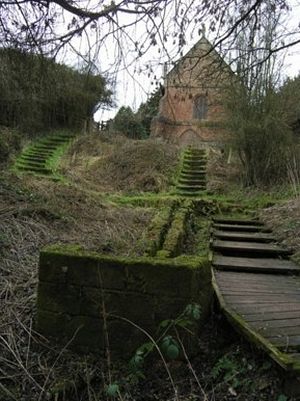 Holy Well of St. Kenelm in Romsley, Worcs Holy Well of St. Kenelm in Romsley, Worcs | 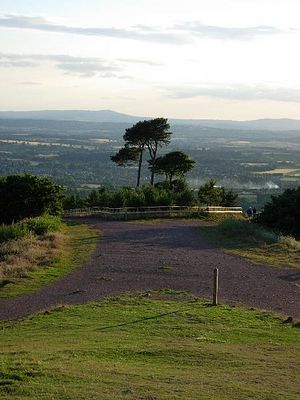 A view from the Clent hills on Clee hills in Shropshire A view from the Clent hills on Clee hills in Shropshire |
A chapel was soon erected on the spot and dedicated to St. Kenelm. It was decided to translate St. Kenelm’s Relics to Winchcombe, the kingdom’s capital. The procession of priests made several stops on the way to Winchcombe, and at each stop streams of holy water appeared at once. One of them gushed forth at Suteley near Winchcombe – this holy well has survived to this day. When the relics approached Winchcombe, the bells of all the local churches began to ring themselves. When the relics were solemnly laid at the Winchcombe monastery, many blind, deaf and dumb flocked to it and all were healed. Cwendrida, who tried to eradicate the name and memory of Kenelm from Mercia, was soon murdered together with Ascobert, and their bodies thrown into a ditch (according to another tradition, she repented and ended her life in a convent).
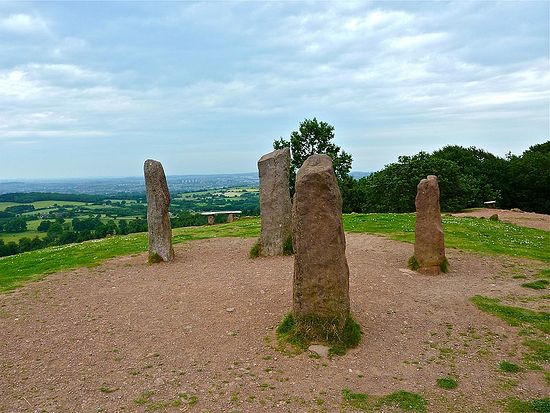 Four stones on the Clent hills, Worcs
Four stones on the Clent hills, Worcs
Whatever these much later medieval versions and legends of Kenelm’s martyrdom may say, the history of his veneration as a saint is absolutely authentic. From the ninth century on for centuries, the monastery in Winchcombe (one of the largest in England) as well as the church with a holy well in Romsley were great places of veneration of St. Kenelm, and thousands of pilgrims—common people, farmers, merchants, visitors from abroad, notable churchmen (like Thomas a Becket and John Henry Newman) and even kings flocked to them to pray and receive healing, to ask for intercession.
The monastery was partly ruined by the Vikings but was later fully restored by the saintly Bishop Oswald of Worcester in the second half of the tenth century. This bishop also spread the veneration of St. Kenelm to France. Winchcombe Monastery was famous as centre of learning; together with the church in Romsley they both received rich donations from generous benefactors. In Romsley a famous fair of St. Kenelm was held annually by order of Henry III and no local people worked that day. Geoffrey Chaucer dedicated one of his “Canterbury Tales” to St. Kenelm; the saint was loved, sung and depicted by outstanding English poets and painters.
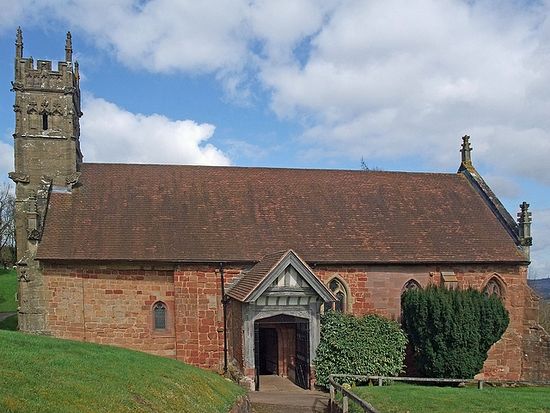 St. Kenelm's Church in Romsley, Worcs, the supposed site of the prince's martyrdom
St. Kenelm's Church in Romsley, Worcs, the supposed site of the prince's martyrdom
In 1539 Winchcombe Monastery was tragically dissolved by Henry VIII and soon most of its buildings were ruined, the splendid shrine of Kenelm destroyed. But the popular veneration of St. Kenelm outlived the barbarous Reformation and this wonderful saint is not forgotten to this day. He is now venerated by Orthodox, Catholics and Anglicans. The pretty little village of Romsley, just near the beautiful Clent hills, can boast its medieval church of St. Kenelm, built of red sandstone, standing precisely on the site of his martyrdom. It is still visited by pilgrims, St. Kenelm’s well is close to the church and there are also two small wells nearby, probably connected with the saint as well.
The attractive, quiet town of Winchcombe stands not far from the larger town of Cheltenham and is situated in the Cotswolds, known as “the heart of England” with its old life, living ancient traditions, many houses built from the local golden-yellow stone and “wool” churches. The Cotswolds were especially loved by such great composers as R. Vaughan Williams, G. Finzi, G. Holst, H. Howells, poets, travelers and architects.
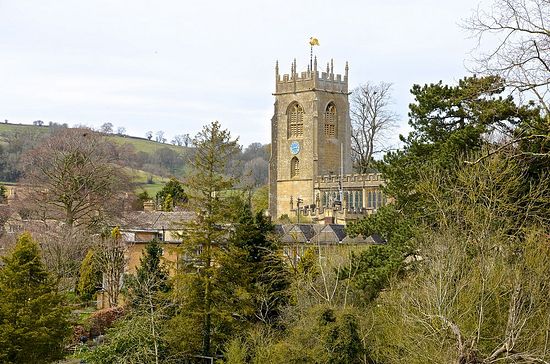 St. Peter's Church in Winchcombe, Glos
St. Peter's Church in Winchcombe, Glos
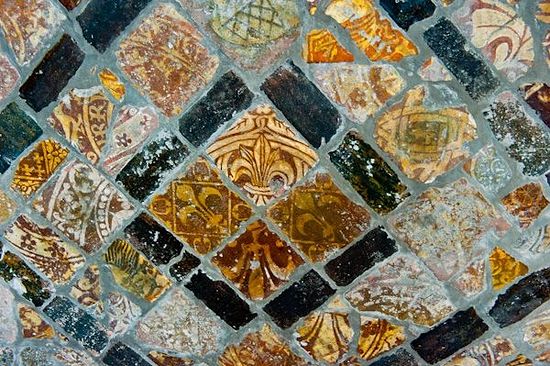 St. Peter's Church in Winchcombe, medieval tile of the ancient abbey
St. Peter's Church in Winchcombe, medieval tile of the ancient abbey
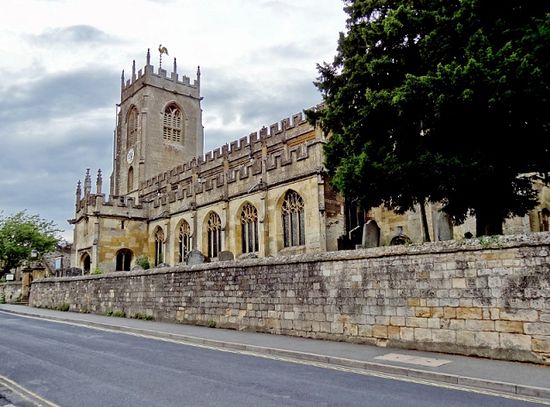 St. Peter's Church, Winchcombe, Glos
St. Peter's Church, Winchcombe, Glos
Only a few ruins survive from Winchcombe Monastery, but the town has several ancient parish churches; one of them, St. Peter’s, is of particular significance. In 1815 on the territory of the former abbey two stone Saxon coffins were found in the ground. In one of them a skeleton and skull of a boy or young man were discovered. Some archaeologists supposed that these may have been the relics of Kenelm, thus hidden from destruction at the Reformation. Both these coffins are kept inside St. Peter’s Church to this day. This church is a real gem, and although services are not regularly celebrated here, pilgrims nevertheless visit it. There is another holy well of St. Kenelm in neighbouring Suteley, near the beautiful Suteley Castle, in whose chapel Henry VIII’s widow Catherine Parr is buried.
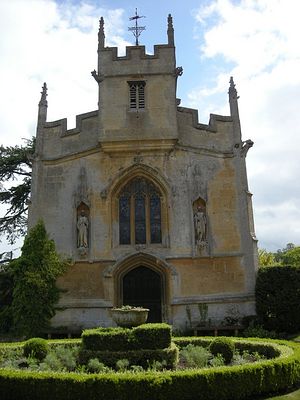 St. Mary's Chapel at the Suteley castle, Winchcombe, Glos St. Mary's Chapel at the Suteley castle, Winchcombe, Glos | 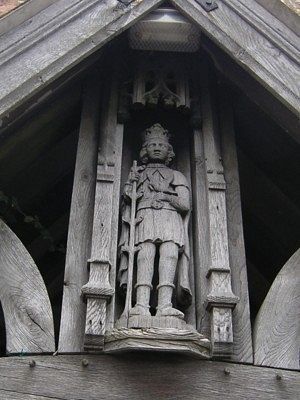 Image of St. Kenelm at the mortuary near the Romsley Church, Worcs Image of St. Kenelm at the mortuary near the Romsley Church, Worcs |
St. Kenelm is depicted in many stained glass windows in churches in western England. Churches dedicated to St. Kenelm can be found in the villages of Sapperton and Alderley in Gloucestershire, Enstone and Minster Lovell in Oxfordshire, Clifton-upon-Teme and Upton Snodsbury in Worcestershire and Stanbridge in Dorset. The Mother of God together with St. Kenelm are patrons of Catholic churches in the towns of Halesowen in West Midlands and Stow-on-the-Wold in Gloucestershire. The Antiochian Orthodox parish in Grimsby in Lincolnshire is dedicated to St. Marina and St. Kenelm. There are two pilgrimage routes connecting Romsley with Winchcombe, regularly used by loving pilgrims in memory of the prince. They are called “St. Kenelm’s Trail” and “St. Kenelm’s Way”. Both of them go through the extremely picturesque countryside of Worcestershire and Gloucestershire, passing places associated with the saint’s veneration.
Although we know little about the life of St. Kenelm, there is no doubt that this saint, full of the grace of God, is in heaven, that he is spiritually present in all the holy places linked with him, and that he intercedes for all of us.
Holy Prince Kenelm, pray to God for us!

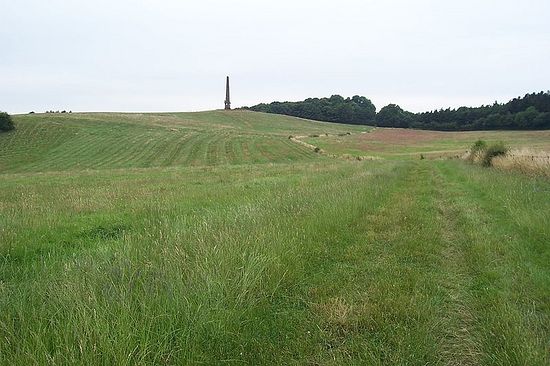
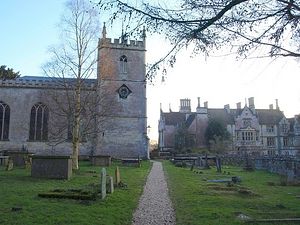
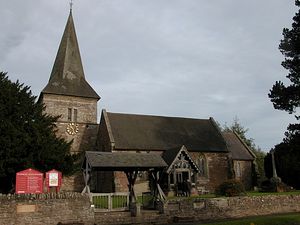
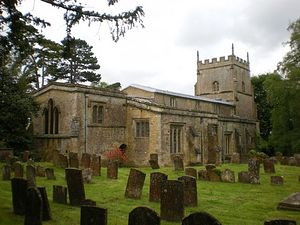
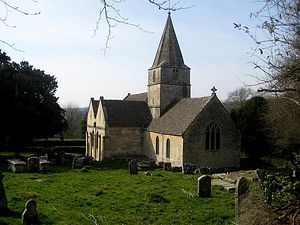
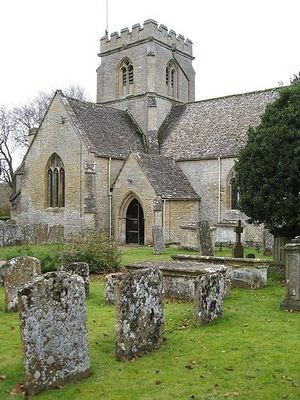
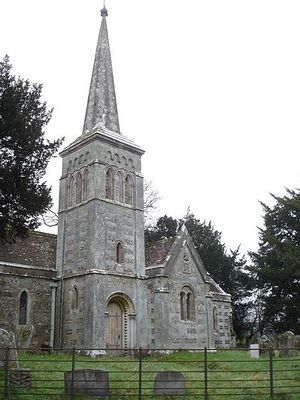
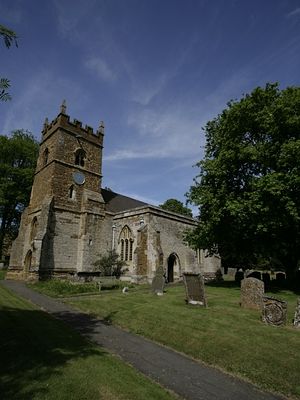
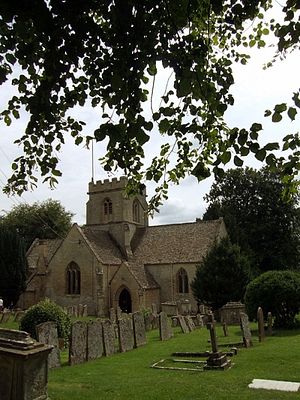

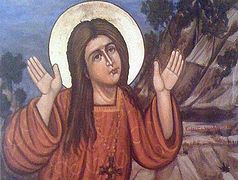
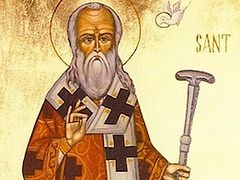
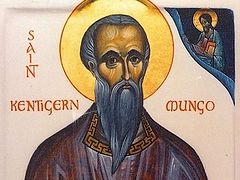
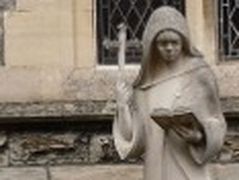

Indeed there are mostly ancient churches in the Winchcombe parish (benefice).
These are St Peter’s (12th century, rebuilt in c. 1475), Christ Church (originally medieval, rebuilt in the 19th century), St Mary’s Chapel (dates back to c. 1440), and St Michael’s (early medieval).
All of them are situated very close to each other, the distances being maximum 2-3 miles. There is also St Nicolas Church in Winchcombe - it is modern, built in 1915.
Jane
I can assure readers that this church is in regular use, my son sings in the choir every Sunday, and I have visited on several occasions to hear him.
In the north aisle of this church are preserved 14th century embroidered copes, later converted into an Altar Cloth.
There are no other ancient churches in Winchcombe.
- Brian Ferris, August 2014.